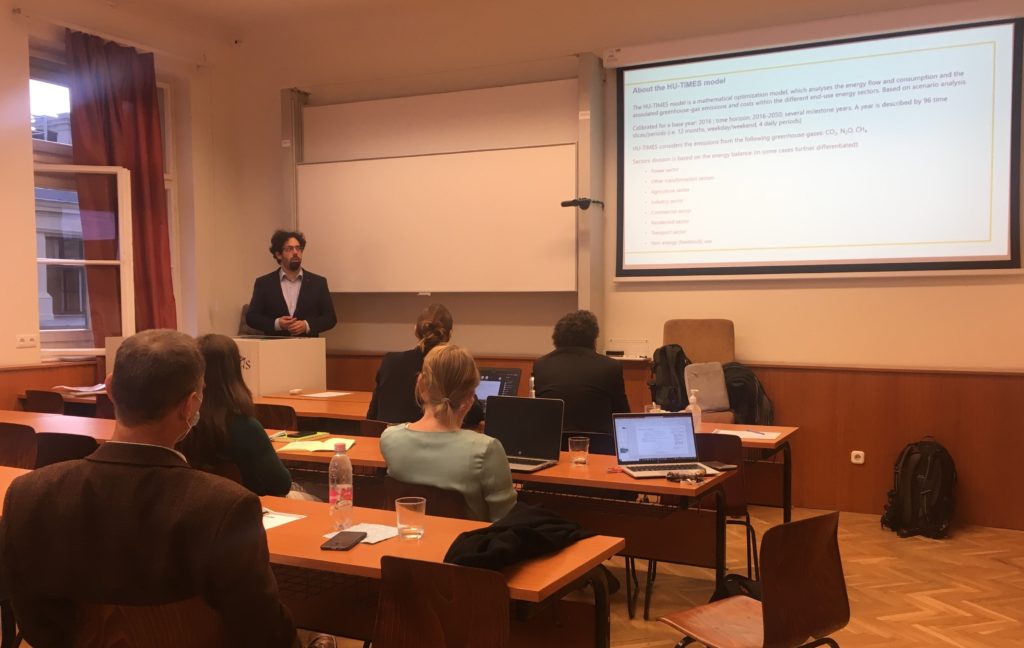Hungarian policy workshop
The Hungarian Policy Workshop of CACTUS Research Project was organised by the Regional Centre of Policy Research in a hybrid form at the Corvinus University of Budapest on 4 November 2021, with the participation of representatives from the Ministry for Innovation and Technology, Ministry of Foreign Affairs, Hungarian Energy and Public Utility Authority, the Prime Minister’s Office, as well as energy and climate experts and modellers from the Hungarian Energy Efficiency Institute and the Global Green Growth Institute, who contributed to the elaboration of the Hungarian NECP and Long-Term Strategy.

The aim of the workshop was to discuss the possible role of energy sufficiency in reaching the net-zero climate goal of Hungary, and to explore the ways of incorporating sufficiency in the national model scenarios. The workshop focused on household energy use in the buildings and transport sectors.
Project partners and sufficiency experts from négaWatt and Fraunhofer ISI gave presentations on the goals and activities in the CACTUS project, the concept of energy sufficiency, the estimated effects of applying related policy tools in France, and on sufficiency initiatives and solutions applied in Germany. REKK researchers provided an overview of energy consumption trends compared to the EU average, and the estimated sufficiency potentials for indicators related to the buildings and transport sectors in Hungary, and also shared the first modelling results on the possible effect of selected sufficiency interventions on energy use and emissions based on the HU-TIMES model.
The discussion following the presentations revealed that the clarification of the energy sufficiency concept and the proper communication of its importance, relevance and applicability is fundamental for political acceptance, especially in countries where the general consumption trends do not yet reflect the overconsumption of energy services.
Comments on the presented model results showed that analysing the impacts of sufficiency needs a different approach from the currently used modelling methodology, and sufficiency actions should be handled as mitigation option besides energy efficiency interventions. However, to treat sufficiency measures as mitigation options, an estimation of the associated costs would be beneficial, which is an additional challenge. It would be useful for the upcoming revision of the NECP to have an idea about the potential emission savings from energy sufficiency and the associated costs for the years in the period until 2050.
